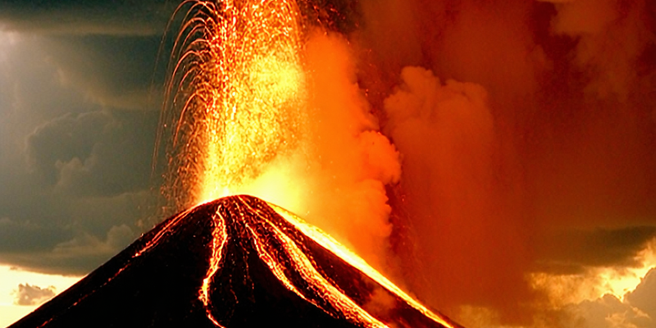
Understanding Volcanic Eruptions and Weather Dynamics
Volcanic eruptions can significantly alter atmospheric conditions. When a volcano erupts, it releases massive amounts of ash, gases, and particulates. These eruptions can have both immediate and long-term effects on the environment. The injection of sulfur dioxide and other volcanic gases into the stratosphere can lead to the formation of aerosols, which reflect sunlight and cool the Earth’s surface. This phenomenon can result in temporary climate shifts, affecting weather patterns globally. Understanding these dynamics is crucial for improving our ability to predict weather changes following significant volcanic events. Predictive models must integrate these factors to accurately forecast potential cooling or warming phases post-eruption. Comprehensive research into the complex interactions between volcanic activity and atmospheric circulation helps meteorologists better anticipate and mitigate these impacts.
Historical Case Studies of Volcanic Eruptions
Examining past volcanic events provides valuable insights into how eruptions can influence weather and climate. The eruption of Mount Tambora in 1815 led to the ‘Year Without a Summer’ in 1816, causing widespread agricultural failures and food shortages. Scientists have long studied these events to better predict future impacts. Similarly, the 1991 eruption of Mount Pinatubo in the Philippines resulted in a global temperature drop of about 0.5°C over two years due to the vast amounts of aerosols expelled into the atmosphere. These historical case studies underline the importance of understanding volcanic influences. They demonstrate the necessity for robust modeling techniques that can accommodate the varied and far-reaching consequences of volcanic eruptions on the global climate.
The Role of Ash and Aerosols in Climate Change
Volcanic ash and aerosols play a critical role in climate systems. When ejected into the atmosphere, these particles can block solar radiation, leading to surface cooling. The cooling effect varies depending on the eruption’s scale, the sulfur content, and the altitude reached by the emitted materials. Recent studies have shown that large eruptions can have a cooling impact lasting several years. Over time, aerosols gradually dissipate, but their immediate impact on temperature and precipitation patterns can be profound. Understanding these interactions is essential for climate scientists seeking to predict and mitigate climate change effects accurately. The study of ash and aerosols, therefore, provides significant insights into the broader environmental impacts of volcanic activity on a warming planet.
Advancements in Predicting Volcanic Effects on Weather
Recent advancements in technology have improved our ability to predict how volcanic eruptions impact weather. High-resolution satellite imagery enables scientists to monitor volcanic plumes and emissions in real-time, offering critical data for modeling. Additionally, advancements in remote sensing technology have greatly enhanced the precision of these observations. Advanced computer simulations can now incorporate more complex variables, leading to more accurate forecasts of weather changes post-eruption. Collaborations between volcanologists and meteorologists have fostered the development of integrated models that consider both geophysical and atmospheric conditions. These advancements play a vital role in our ability to anticipate and respond to the immediate and long-term impacts of volcanic activity on global weather patterns, enhancing preparation and adaptability.
Challenges in Integrating Data into Prediction Models
Integrating volcanic data into weather prediction models poses several challenges. One significant issue is the variability and unpredictability of eruptions, which can differ vastly in terms of size, duration, and composition of emissions. Accurate data collection is complicated by volcanoes’ often remote locations and hostile environments. Researchers are continually developing innovative methods to handle these complications. Additionally, the use of advanced technology is essential to enhance data precision. Existing models must adapt to include dynamic parameters like volcanic ash dispersal and aerosol interactions in the atmosphere. Furthermore, interdisciplinary collaboration is necessary to harmonize geological and meteorological data, ensuring that the predictions are robust and reliable. Overcoming these challenges is crucial for improving the resilience of societies to volcanic impacts.
